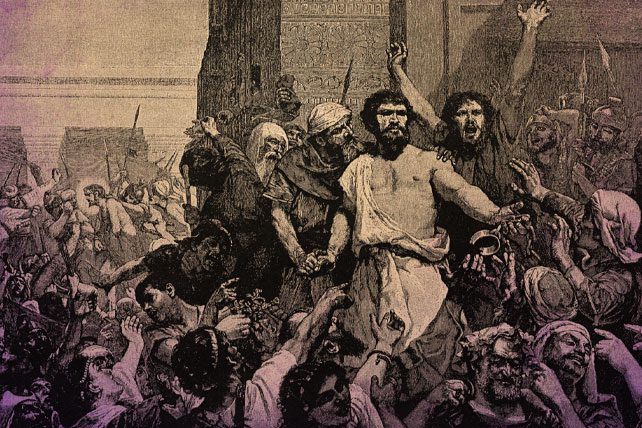Barabbas, a figure shrouded in mystery and intrigue, appears briefly in the New Testament narrative, yet his story intersects dramatically with the final hours of Jesus Christ. Known primarily for being the prisoner released in place of Jesus, Barabbas’s tale raises questions about justice, mercy, and destiny.
10 Facts About Barabbas
This article delves into ten fascinating facts about Barabbas, shedding light on his identity, significance, and the aftermath of his unexpected freedom.
1. Who was Barabbas in the Bible?
Barabbas is mentioned in all four Gospels (Matthew, Mark, Luke, and John) as a prisoner chosen by the crowd to be released instead of Jesus Christ. Described as a notorious prisoner involved in insurrection and murder, Barabbas’s release is pivotal in the Passion narrative, showcasing the tumultuous political and social climate of the time.
2. Barabbas Meaning
The name Barabbas comes from the Aramaic words “Bar” and “Abba,” meaning “son of the father.” This etymology is rich in irony and symbolism, considering the choice between Jesus, the spiritual Son of the Father (God), and Barabbas, a criminal, highlighting the profound moral choices faced by society.
3. Did Barabbas Repent?
The Bible does not provide any information about Barabbas’s life after his release, including whether he repented for his crimes or how he responded to his unexpected freedom. His fate remains a subject of speculation and interpretation within theological and literary explorations.
4. Barabbas Meaning in Hebrew
While “Barabbas” is of Aramaic origin, its meaning in the context of Hebrew culture underscores the significance of familial lineage and identity. The emphasis on “son of” (Bar) reflects the societal importance of one’s paternal connection and heritage.
5. Why is Barabbas Called Jesus Barabbas?
In some ancient manuscripts of Matthew’s Gospel, Barabbas is referred to as “Jesus Barabbas.” This detail suggests that “Jesus” (a common name at the time, derived from Joshua, meaning “Yahweh is salvation”) was his given name, with “Barabbas” distinguishing him from Jesus Christ. This naming could highlight the stark contrast between the two men offered to the crowd.
6. What Happened to Barabbas After He Was Released?
The Gospels do not record what happened to Barabbas after his release. His fate is left untold, leading to various speculative stories and interpretations in Christian tradition and apocryphal texts. Some suggest he may have been present at the Crucifixion, while others imagine his life changed by the events he witnessed.
RELATED: 7 Truths About Following Jesus That Will Change Your Life
7. Barabbas’s Full Name
While traditionally known simply as Barabbas, the reference to him as Jesus Barabbas in some texts suggests a full name that directly contrasts with Jesus Christ. This juxtaposition serves to deepen the narrative’s complexity and the choices presented to the crowd.
8. Barabbas and the Insurrection
Barabbas’s involvement in an insurrection against Roman authority highlights the political tensions in Judea under Roman occupation. His actions and subsequent arrest portray the volatile atmosphere, with many Jews seeking liberation from Roman rule.
9. The Choice of the Crowd
The choice presented to the crowd by Pontius Pilate, offering to release either Jesus or Barabbas, illustrates the climactic intersection of political maneuvering, public sentiment, and divine plan. This moment underscores the crowd’s role in the unfolding events leading to the Crucifixion.
10. Barabbas in Christian Theology
Barabbas’s release over Jesus has been interpreted in Christian theology as symbolic of substitutionary atonement, where Jesus takes the place of sinners. The exchange reflects the core Christian belief in Jesus’s sacrificial death for humanity’s redemption, with Barabbas representing the beneficiary of mercy undeserved.

